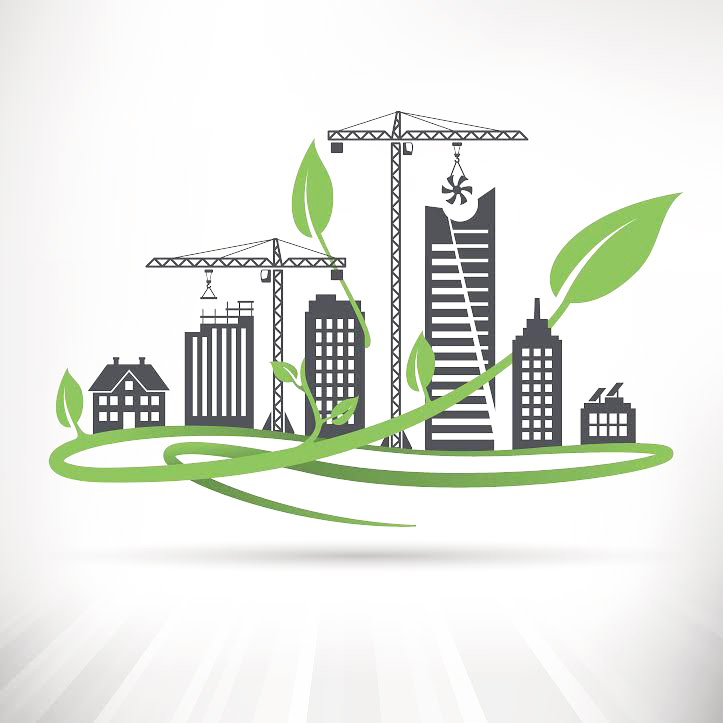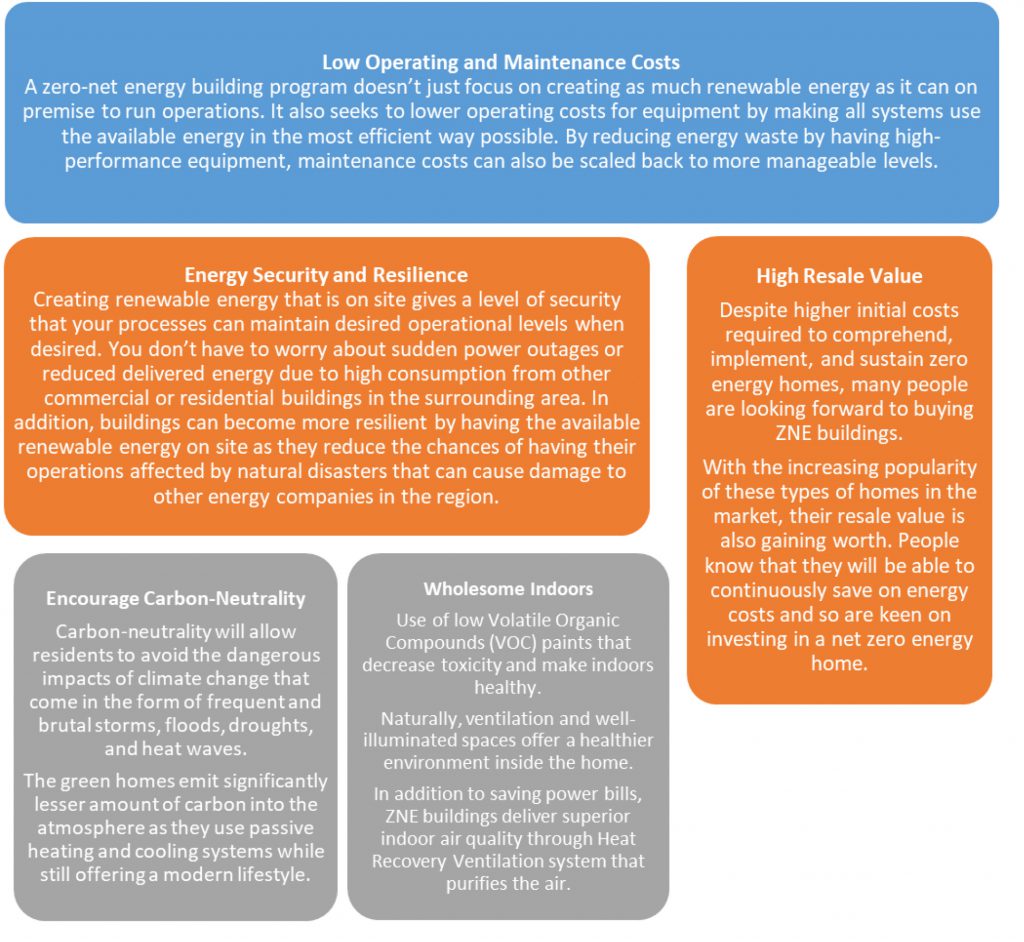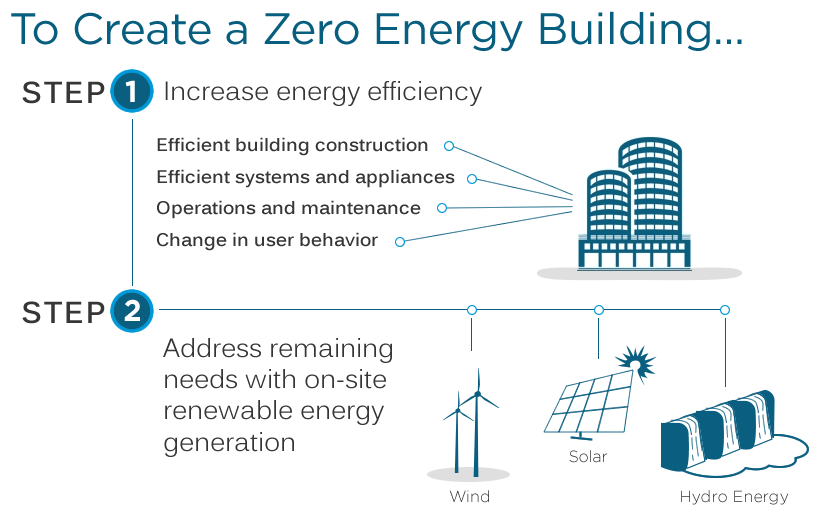By Amrita Batra
Across the country, property owners are seeking green initiatives and sustainability programs to minimize waste and reduce their reliance on natural resources while trying to keep their operational costs low. A new trend that is moving into the building sector involves creating zero-net energy buildings. Zero-Net Energy (ZNE) buildings are certainly a part of India’s future realty market. Governments, property dealers and realtors are embracing sustainable techniques at a fast pace during property construction.
Today, homeowners are enthusiastic about living in eco-friendly homes as it not only saves costs but also inspires a better way of life. A combination of an advanced building system and futuristic design make net-zero homes more energy competent and carbon-neutral. No doubt, Zero Net Energy buildings offer huge potential for saving energy!
According to the market research report published by P&S Intelligence, the global net zero energy buildings market share was valued at $896.6 million in 2018 and is expected to reach $2,106.6 million by 2024, advancing at a CAGR of 15.6% during the forecast period (2019–2024). The residential category is likely to show a faster CAGR during the forecast period, owing to increase in government targets and plans to achieve sustainable energy consumption.
Before we proceed, let us first clear our basics about ZNE Buildings.
What Are Zero-Net Energy Buildings?
Zero-net energy buildings are a new wave of energy reduction and environment-friendly construction or renovation projects geared toward one goal: reducing the dependence of non-renewable energy that is produced off-site and delivered to the building. These are structures with no net energy utilization. This implies that the total energy consumed by the building on a yearly basis is nearly equal to the total renewable energy produced on-site or elsewhere by renewable energy sources.
In addition, building owners and facility managers try to reduce energy consumption throughout their operations so that the building uses less than the available on-site energy or equal to the amount of energy that is produced. The ZNE buildings add less greenhouse gas to the environment as compared to a similar non-ZNE building. These buildings can produce the same amount of energy it is using without compromising the daily life of the residents living in it.
By seeking renewable energy endeavours, buildings can save on costs that are spent exporting non-renewable energy from other areas across the country. It allows buildings to become highly efficient with less of an environmental impact. Currently, there are five types of structures that can qualify as being considered zero-net energy.
- Zero energy campuses consist of building sites grouped in a specific location that has renewable energy systems that are owned by the institution itself
- Zero energy communities are building sites that are grouped in a specific location that have systems that create renewable energy
- Zero energy buildings are fully or partially enclosed structures with exterior walls and a roof that has these renewable energy systems
- Zero energy portfolios are collections of buildings and sites where a single entity owns or leases renewable energy systems.
Technical Understanding Of Zero Energy Buildings
Zero-net energy homes are built with energy-conscious designs and include elements that can run without fossil energy sources. Other features include:
- Furnished with eco-friendly elements such as rooftop rainwater harvesting system that decreases the dependence on treated water.
- Solar panels, geothermal heating, wind turbines, and heat recovery ventilation systems are some of the techniques that are employed to achieve a zero-net-energy status.
In current times, while land constraints are pushing the trend of high rises and compact living, they are also exhausting a major portion of the total energy produced. Globally, buildings account for nearly 30% of the total energy-related greenhouse gas emissions.
Seeing that the global climate change is a burning topic at present, immediate action must be taken towards a reduced carbon future, making net-zero energy properties the cornerstones of the housing revolution.
Advantages To Zero-Net Energy Buildings
There are many reasons why facility managers are seeking zero-net energy buildings in addition to seeking more environment-friendly operations. The types of long-term benefits can vary based on the building and operations. Some of the advantages you may seek if deciding to create a zero-net energy building:
A Worthwhile Endeavour In Reducing Energy Consumption
There are many ways that buildings can seek to become zero-net energy during the construction or renovation phase. Reduced plug loads, energy-efficient retrofits, and integrated designs as well as conservation programs can allow your facility to achieve this goal. Careful consideration and an evaluation of your facility can allow you to decide on the best initiatives and programs to seek out to lower energy consumption while making your building run more efficiently.
A green homeowner can save up-to Rs. 25,000-100,000 annually on the expenditure incurred on water, electricity, and society maintenance. This amounts to considerable savings at virtually no additional cost! With the decrease in the incremental costs of constructing green homes and the residents becoming increasingly energy-conscious, green homes will soon be available at similar prices as a regular house.
Not just individuals, real estate agents are also today more environmentally and socially aware. They seek new opportunities and choices that will benefit the planet, as well as the buyers.
As more than two-thirds of urban construction segment in India is yet to develop, ZNE homes seem a valuable opportunity to influence a paradigm shift in the direction of sustainable housing development while also allowing financial foresight and an enhanced sense of wellness on the whole. Indeed, a win-win situation!





